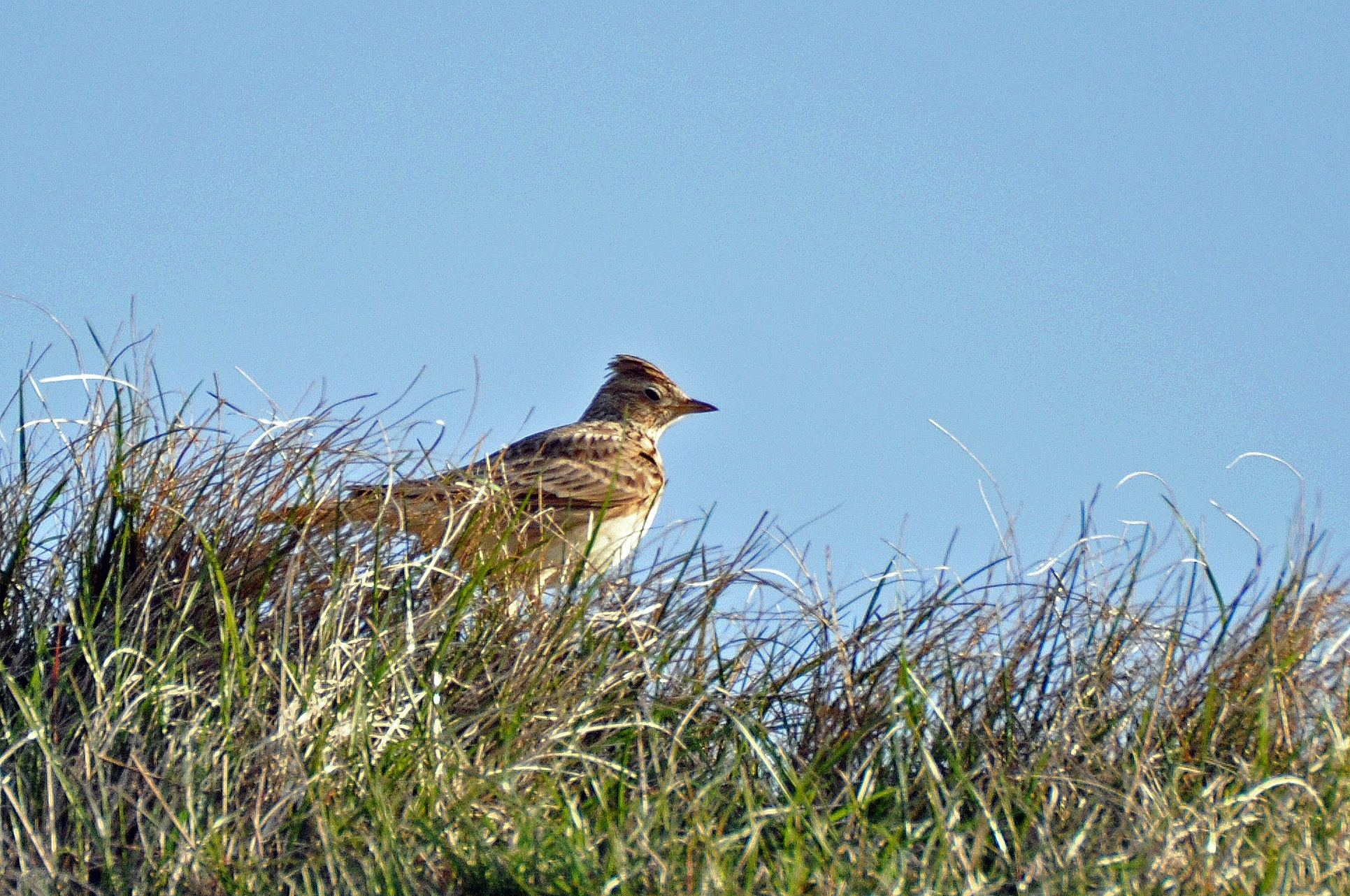Alauda arvensis
Habitat
Skylarks can be found on most areas of open farmland, preferring larger arable and grassland fields. The open areas are chosen to allow sightings of potential predators.
Food
Adults feed on a range of seeds and plant shoots including knotgrass, groundsel, fat hen and grasses. Chicks are entirely dependent on insects until fledging, favouring sawfly larvae, beetles, ants, spiders and grasshoppers.
Nesting
Breeding takes place between April and August. Skylarks nest on the ground in short grass or crops, avoiding vegetation over 60 cm high. Due to high predation rates, skylarks need to produce up to three broods a season. Winter-sown crops and silage fields are only suitable for a single brood, making buffer strips and spring crops essential to maintain adult populations.
Song/Call
“Preeet”- The skylark has a variety of calls and sings from late winter to mid-summer. The song is rolling, chirruping and fast whistling.
Beneficial Management
- Include a spring cereal as part of the arable rotation. This provides ideal and much needed late-season nesting habitat.
- Retain over-winter stubble, especially cereal stubbles, to provide a source of winter food and a nesting habitat in spring/summer.
- Buffer strips and field margins will provide similar conditions and can attract very high breeding densities. Aim for a range of grass heights and structures.
- Be mindful of nesting birds and fledglings when cutting silage, fallow and buffer strips.
- Consider including “Skylark plots” within winter cereals.
Download and print
(opens in a new tab)”>Download as PDF to print >

